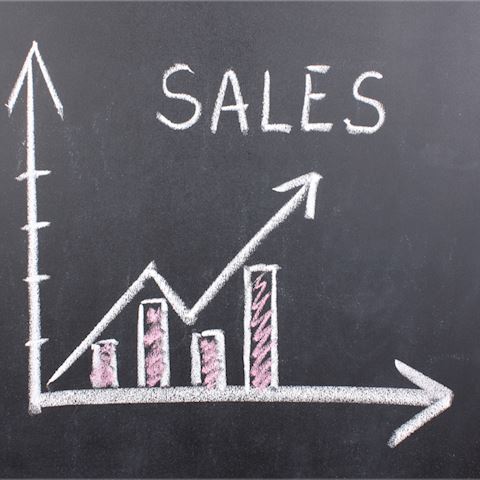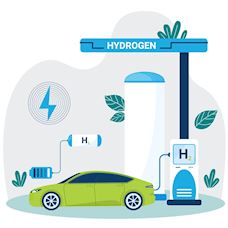
Navigating the rise of technology in construction
In this article we’ll dive into the booming world of smart construction technology, exploring the innovations driving the change and what the future looks like for the industry.

Approached correctly, selling through distributors can be as powerful as selling direct. Here, Clear B2B outlines three key areas for success.
1. Own your space in the marketplace
When you sell via distributors you lose a certain amount of control around your message. Your distributors, each with their own different processes, approach and sales techniques, become the ‘human face’ of your brand. If you’re not careful this interaction wholly defines what the end customer thinks and feels about your company.
To balance this, it’s crucial that you pro-actively manage the perception of your company and its reputation within the wider sales environment. That comes down to having a strong proposition and a solid marketing and communications strategy to get your messages out there in a consistent and effective manner. Let’s take each of those in turn:
Proposition: What do you want people to think and feel about your brand? If you haven’t nailed this then there’s no way that a message is going to survive through a third party channel to reach the end customer. Some of you may have seen our “Little book of Clear thinking” which covers the steps prior to developing your proposition. You’ll need to start with your vision – what do you want to be? Then work out your mission – how will you get there? And set your values – the way you’ll do it, your style.
Then to your actual proposition. What’s the one thing you want to be famous for? It needs to be benefit-led, authentic and propel you up and above your competitors. This makes it easier for your distributors to recommend you and easier for the end customers to say ‘yes’.
Once you’ve identified your proposition, then the next step is to decide how you creatively manifest it across the various communication channels. How do you turn that into a creative concept and visually represent it? How does it translate into captivating headlines and imagery on your key sales collateral? How does that carry through into PR and social, for example?
Understanding this will also help you to decide what types of distributors will suit you best – you can look to match values and ensure they’re well equipped to support your proposition, rather than dilute it.
Marketing communications strategy and plan: As Benjamin Franklin rightly said – if you fail to plan, you plan to fail. Getting a roadmap down on paper means you’ll be clear about what you want to achieve and how you’ll get there. Your plan is going to be split into two main audiences – end customers and distributors who currently, or might in the future, sell your offering. It’ll likely be a good mix of channels – perhaps you’ll need some PR to position yourself as a thought leader in the marketplace or to pro-actively manage your reputation, maybe some ads in the key press to raise awareness, a social media campaign to start some dialogue and some hospitality to deepen relationships with current or potential distributors. Either way this stage is about knowing where your audience is and how your messages might need to be tailored in order to cut through to them.
With this plan properly in place every touch point that your distributors and end customers have with your brand should portray it in the way you intended. You’ll be better in control of what people think and feel about your company, you’ll build confidence in the market place and minimise risk.
2. Create a powerful partnership
There’s an underlying current of ‘them and us’ in many manufacturer and distributor tie ups but it shouldn’t be this way. You need to view your distributor as your team mate and structure the relationship in a profitable, rewarding way for you both. Consider the following:
3. Focus on the sell out
Manufacturers are often criticised for only being interested in what the distributor buys but this is a short sighted approach. The key to success is to get the balance right and put as much effort and thought into what the distributor sells out as you would what they buy in.
So what can you do to aid sell-out? Firstly you need to make sure your distributor feels confident that demand will be there. Remember in step one, when we mapped out the marketing communications? Well a great place to start is by sharing your plans to demonstrate your commitment to building awareness and driving demand.
You can also help to generate demand by including a joint marketing plan as part of your partnership discussions – this is a great way to bolster the national brand communications and make sure your distributor feels well supported by helping to drive traffic to their business.
Implement carefully designed promotions, incentives and rewards to aid the sell-out, but remember, whilst you can reward sell-out in order to gain a preference or a bit of momentum, to achieve growth it’s important that programmes are designed to reward incremental business. As most of these schemes are agreed at the top level, the communication to those on the ‘shop floor’ needs to be carefully executed in order to ensure it cuts through to them and engages their support.
To further explore how you can strengthen your brand proposition, create long lasting partnerships and increase sell out with your distributors contact Rachel McHugh on +44 1285 626000 or email r.mchugh@clearb2b.com



In this article we’ll dive into the booming world of smart construction technology, exploring the innovations driving the change and what the future looks like for the industry.

Learn how to use presentation opportunities as an effective lead-generation tool in your trade show activity.

Great marketing success comes from keeping your communications focused, engaging and simple to ‘get’ - but that isn’t always so simple to achieve.

With multiple types of technologies being considered, we bring you a snapshot of alternative fuels and review the most prominent pros and cons for each one.